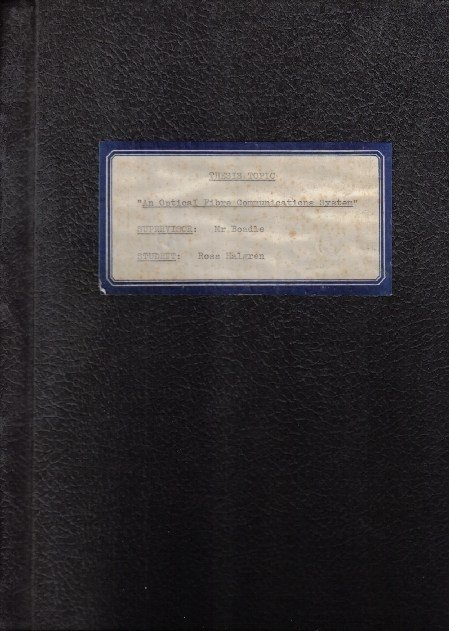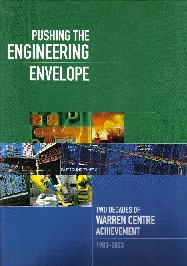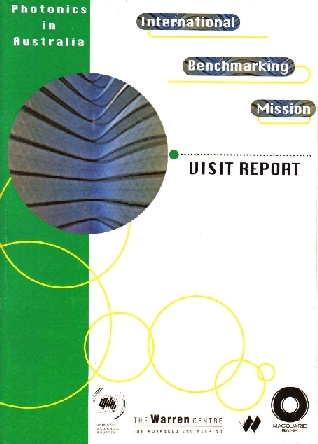|
Publications
|
The following are more publications
that Ross Halgren has authored, contributed to or been referenced by regarding
innovative Research & Development activities.
 |
 |
 |
 |
 |
|||||
|
Pub
1
|
Pub
2
|
Pub
3
|
Pub
7
|
Pub
8
|
Pub
9
|
Pub
10
|
Publication 4 - Tomorrow's World - The Australian Initiative published by Australian Publishing Corporation in 1993, included on page 48, a section on AWANET-30 and AWANET-100 with photos of the first AWANET application, being the Sydney Police Centre.
Publication 5 - The Fibre Distributed Data Interface (FDDI) Standards for Local Area Networks were developed by the American National Standards Institute (ANSI) - commencing in the early 1980s and became International Standards by the early 1990s. In the mid-1980s, work commenced by the ANSI X3T9.5 committee on the FDDI-2 variant of the standard for integrated packet switched and circuit switched services. This was a time when integrated services networks were a hot topic, with the carrier world and the data world aiming to acquire a larger share of each other's business. AT&T and IBM were major contributors to the FDDI-2 standard for this reason. Between 1987 and 2003, Ross Halgren and his team attended the FDDI-2 meetings and the sections of the Standard documents contributed to by Ross Halgren are highlighted in the accompanying FDDI-2 Standards TOC. In the mid 1980s, the carriers were slow off the mark, with the commenced development of SONET and SDH standards for circuit-switched Metro/Access and Wide Area Networks. It was not until 10-15 years later that they finally upgraded the SONET/SDH standards to support packet data services. In parallel, work had also commenced on Fast Packet Switching (FPS) and by the early 1990s, this had evolved to Distributed Queue Dual Bus (DQDB and IEEE 802.6) and Asynchronous Transfer Mode (ATM) Standards. At the end of the day (ie, 15-20 years later), it was the IEEE 802.3 Switched Ethernet and Internet Protocol (IP) Standards which dominated the integrated services networking race, not FDDI-2, SONET/SDH, DQDB or ATM. The reason for this was the migration of integrated video, audio, voice and data services to the home/office desktop - something that in the mid-1980s, was considered by AT&T and IBM alike as a pipe-dream. Two of AWA's optical fibre networking products, AWANET-100 (Projects 4 & 6) and MILNET-2000 (Project 7) were based on the FDDI-2 standards, with AWA MicroElectronics, AWA LAN Products and AWA Defence & Aerospace teams developing core chip-sets, circuit board designs and software. The core FDDI-2 chip-sets developed included a Hybrid Ring Control (HRC) chip and an Isochronous Media Access Control (MAC) chip to complement the Packet MAC and Physical Layer PHY-2 chip sets developed and manufactured by National Semiconductor for FDDI and FDDI-2 networks. The AWA FDDI-2 HRC chip was developed with support from Australian Defence Industry Development (DID) - for military and civil applications.
Publication
6 - In 1995, the Australian Science and Technology Council (ASTEC)
established a collaborative foresighting study focused on ICT and Full Services
Networks (FSNs). ASTEC formed a partership with the Australian Photonics CRC
and the Australian National Training Authority for this study. The subsequent
report was called "Surf's
Up: Alternative Futures for Full Service Networks in Australia".
Ross Halgren was invited to participate in this study due to his research and
industry background in integrated services optical networks. The four scenarios
painted were: Riding The Wild Surf; Navigating The High Seas; Drifting In The
Doldrums; and Shipwrecked. In retrospect, as we rapidly approach 2010, aspects
of all four scenarios eventuated. "Navigating the High Seas" is close
from a user's perspective and "Shipwrecked" is close from an industry
perspective. In all cases, the ISDN and HFC technologies considered important
at that time were surpassed by IP/Ethernet, ADSL2+ and Broadband Wireless.

Page 2 of 3